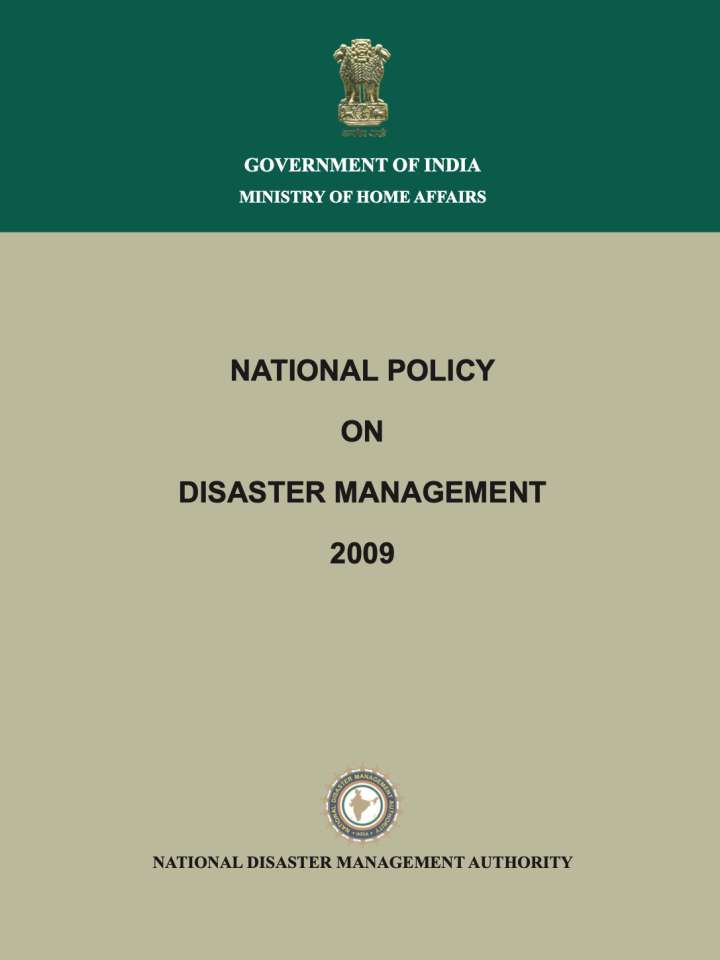India: National policy on disaster management 2009
This is the National Policy on Disaster Management in India from 2009. India is vulnerable, in varying degrees, to a large number of disasters. 58.6 per cent of the landmass is prone to earthquakes of moderate to very high intensity; over 40 million hectares (12 per cent of land) is prone to floods and river erosion; of the 7,516 km long coastline, close to 5,700 km is prone to cyclones and tsunamis; 68 per cent of the cultivable area is vulnerable to drought and hilly areas are at risk from landslides and avalanches. Vulnerability to disasters/emergencies of Chemical, Biological, Radiological and Nuclear (CBRN) origin also exists. Heightened vulnerabilities to disaster risks can be related to expanding population, urbanisation and industrialisation, development within high-risk zones, environmental degradation and climate change.
The enunciation of this policy represents merely the first step in the new journey. It is an instrument that hopes to build the overarching edifice within which specific actions need to be taken by various institutions and individuals at all levels. A destination has been described, and hopefully, a direction shown. The stage has been set, and the roadmaps now need to be rolled out.
This policy of 2009 replaces the policy of 2005.
